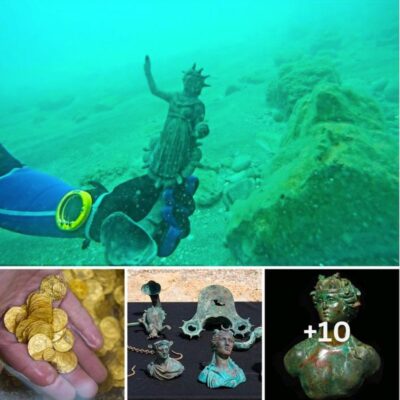Millions of years ago, an enormous, long-necked marine reptile undulated through the waters of an ancient seaway in what is now Wyoming, whipping its snaky neck back and forth and using its crocodilelike jaws to snap up fish and other small sea creatures.

Paleontologists discovered fossils of this sinuous sea monster in 1995 during a dig in the minimally explored uppermost portion of Pierre Shale, a geological formation dating to the Upper Cretaceous period (approximately 101 million to 66 million years ago).

And unlike other plesiosaurs, this animal had physical characteristics that set it apart from other members of this extinct clade of marine reptiles.

Now, researchers have revealed their findings about this new species in a study published online Sept. 26 in the journal iScience

“Plesiosaurs typically come in two distinct flavors or morphological types and have either a long, snakelike neck with a small head, or a short neck and a long crocodilelike jaw,” Walter Scott Persons IV

a paleontologist from the College of Charleston in South Carolina and the study’s lead author, told Live Science.

“In this case, this weird, unique beast is a cross between the two.”

Paleontologists dubbed the animal Serpentisuchops pfisterae, which translates to “snaky crocface”.

This 23-foot-long (7 meter) creature’s remains have been on display in the Glenrock Paleontological Museum near Casper, Wyoming, since the fossils were unearthed more than 25 years ago.

“The first time I saw Serpentisuchops pfisterae,” Persons said, “I was still in elementary school.”

In the decades since, paleontologists have conducted detailed studies of the animal’s remains, which represent about 35% of the body and include its “beautifully preserved lower jaw, sizable amount of its skull, its complete neck, vertebrae, the majority of its tail and some ribs,” Persons said.

“The only pieces that we’re missing are elements of its limbs or paddles,” which it used for swimming, he added.

Also found at the shale-rich site — described by Persons as resembling “the surface of the moon” or “a trip to Mordor” — were 19 teeth; just one was still in place in the specimen’s jaw, while the rest were scattered among the remains.

However, according to the study, the presence of roots in the jaw confirmed that the teeth were from this particular specimen and not another plesiosaur.

“The tall, conical teeth are smooth and not serrated with a cutting edge, so this animal wouldn’t have been able to bite through thick bones,” he said.

“The teeth had a single function, which was to do a very good job at stabbing and skewering prey. It likely went after slippery prey that wouldn’t put up much of a fight, such as small fish or abundant cephalopods.”

This new finding “reveals a whole new ecotype, an animal that is specialized in a way that’s different from all the other plesiosaurs that were around at the same time,” with adaptations, ” to do something different and become good at making a living amongst the other animals that shared its environment,” he said.





I appreciate you taking the time to read this post from Ideassimple. I hope you learn a lot about nature. Please leave a comment or share our article if you think it insightful and interesting. Thank you very much!











